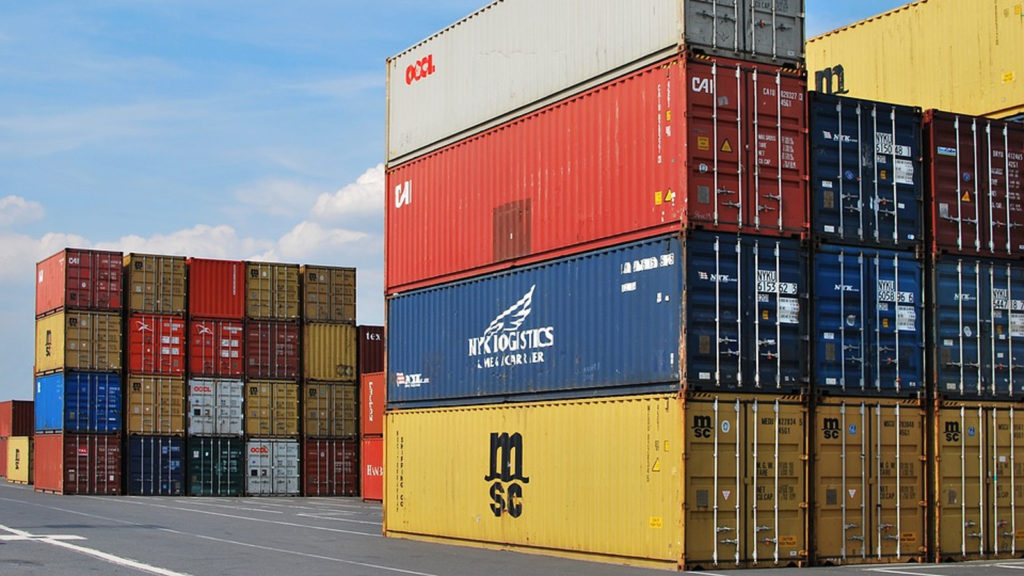With today’s discerning consumer demanding that their wearable tech be as functional as it is fashionable, the HUAWEI WATCH GT 5 Series steps boldly…
The South African trade and the impact on foreign investments [Sponsored]

This is how South Africa looks like in the eyes of the foreign investor. To increase overseas funding to South African startups and corporations, the South African economy as a whole needs to improve by at least a few notches. With its natural resources, immense size, and entrepreneurial spirit – it is definitely possible.
The 2010s have been a volatile decade for the South African economy. It started with a sharp but short recession triggered by the global financial crisis, was followed by a mini-commodities boom, and then a crash in the prices of gold, platinum, and iron ore, three of South Africa’s biggest exports (in correlation with a sharp decline of 50% in the Rand to USD rate).
Where are we now, and what lies ahead? These issues will be addressed, but first, let’s take a look at the South African economy as it exists today.
The SA economy by the numbers
According to data released in 2016, the top destinations for South African exports are China ($18.6-billion), the UK ($10-billion), and the US ($7.5-billion). South Africa imports the most goods from China ($13.9-billion), Germany ($6.9-billion), and the US ($5.1-billion).
What does South Africa ship to its trading partners? This nation’s biggest exports are gold ($20.7-billion), diamonds ($10.9-billion), and platinum ($8.5-billion). As for what it buys from other countries, South Africa largest imports are oil ($6.5-billion), gold ($4.3-billion), and vehicles ($3.5-billion).
Why the SA economy struggled in the 2010s
While the commodities crash — which saw drops between 33-50% in the price of metals like gold, platinum, and iron ore — is the most significant factor behind the sluggish performance of the South African economy, the Gupta affair was the one that got the most press.
Easily the biggest political scandal in South African history, it was revealed in 2016 that the Guptas — a trio of Indian billionaire brothers — had used their fortune to influence the inner workings of the South African government.
As of February 2018, the Gupta brothers fled South Africa, allowing their businesses, involved in everything from mining to media, to fall into receivership. In the same month, President Jacob Zuma resigned in disgrace, much to the relief of an entire nation.
The appointment of new President Cyril Ramaphosa hasn’t made matters any better. Not long after being sworn in, he pushed a plan that would allow for the expropriation of land from white farmers. A flood of farms quickly hit the market, forcing many to walk away from their properties.
This proposal is thought to have been a major factor behind the steep 29% plunge in agricultural economic output in Q2 2018. It has also created a chilly investment environment in agribusiness, as firms are uncertain what land seizures would mean for them.
Manufacturing has suffered as well. The textile industry is a prime example — over the past 20 years, a flood of cheap imports from markets like China has caused the sector to shed two-thirds of its jobs. These losses and others have swelled the ranks of the unemployed, with the jobless rate sitting just below 27%, according to the most recent data from Statistics South Africa.
The first two quarters of 2018 saw back-to-back quarters of contraction, causing South Africa to lapse into a recession for the first time since the global financial crisis. While Q3 2018 saw a return to growth (2.3%), questions remain concerning the stability of the South African economy.
Room for growth in SA exports?
Despite the decline in demand (and the price) of minerals like gold and iron ore, demand for diamonds continues to strengthen globally. According to management consulting firm Bain & Company, world demand for diamonds is expected to grow 1% to 4% through 2030. Yet, the same firm expects global diamond production to peak starting in 2019.
What this means: heading into the 2020s, higher spot prices for diamonds means higher profits for producers, which will fund exploration and potentially, the establishment of new mines.
Agriculture is another major opportunity for South Africa. The world’s population continues to increase — we’ll need to feed almost 10 billion mouths by 2050. This will create opportunity for farmers and agribusiness operations, especially as climate change applies pressure to farms already in existence.
The major obstacle to that, of course, is President Cyril Ramaphosa’s land seizure scheme. Done in a bid to redress imbalances in black ownership of farmland, it has instead led to the emigration of experienced farmers, and it has created an icy agribusiness investment environment.
The immediate abandonment of this disastrous proposal is a must if South Africa hopes to be a participant in the coming global agriculture boom.
Can SA overcome its economic problems?
Other nations have found themselves in positions similar to the one faced by South Africa. By benchmarking how they moved from weakness to strength, this nation can revive their moribund economy.
One of South Africa’s biggest roadblocks on the road to economic prosperity — corruption. Emulating Singapore’s example — presently one of the world’s least corrupt nations — is a good place to start.
This tiny country’s story is no fluke – even today, squeaky clean Singapore is surrounded by nations that rank as highly corrupt.
They diverged from their peers starting in 1952 with the establishment of the CPIB, or the Corrupt Practices Investigation Bureau. While they were stymied by inadequate laws in the beginning, the election of the People’s Action Party in 1959 gave this outfit teeth.
From that year on, compromised officials were jailed, terminated, or pressured into resigning. Their legacy 65 years on: a society where people and business interests alike have confidence in the government and the country as a whole.
Rampant inequality also plays a major role in South Africa’s economic woes. Black South Africans make far less than the white minority, despite the fact they make up 67% of the population. In an attempt to narrow this gap, President Cyril Ramaphosa has proposed seizing farms from some white owners and giving them to black farmers.
As we already know, this has had the opposite intended effect – agriculture production went sharply lower in the first two quarters of 2018, and was a major factor behind the brief recession earlier this year.
Instead, South Africa should study how South Korea became one of the wealthiest nations in Asia. In 1960, this East Asian nation had a per capita GDP of $79 — worse than some sub-Saharan nations.
By investing heavily into education and building up an export-oriented manufacturing economy, it overcame its poverty in natural resources to become one of the world’s top workhorses.
During their rise to prominence, South Korea also took steps to make starting and running a business easier. Today, South Korea ranks fourth in the world for the ease of doing business according to a 2018 survey by the World Bank.
Now, it is true that South Africa is already an industrialized country. However, too much of its economy currently focuses on resource extraction. By developing industries attuned to the needs of the world, they can diversify their economy, which in turn will reduce their susceptibility to commodity shocks.
Final words on SA economy, impact on foreign investors
There are many ways South Africa could do this. For instance, the world is in need of green infrastructure. By taking its iron ore and refining some of it, they could churn out parts for wind turbines and the structural bodies for solar arrays at a cheaper price than many developed nations.
With an entire continent to sell to, they could lead Africa in a worldwide transition to a decarbonized economy, and attract all the money from overseas that has been flowing elsewhere over the past decade.
It would be reasonable to say that once that South Africa improves its state of economy and shows stability money will be flowing into the country from each direction.
The past 10 years showed a tremendous increase in venture capital investments and Chinese and American money (mostly) is flowing to each corner of the green earth while South Africa stays behind to a large extent. It’s about time for that to change.
Additionally to the above, once the economy stabilizes, there will be a lot of South African money flowing back to the country. With more than 500 000 South Africans in diaspora, the transfer of money from abroad back to South Africa can have a significant impact on the economy.
But before that happens, there needs to be political stability to a degree that a South African residing in Europe or the US will be tempted to go back home to make a living and nurture his family.

